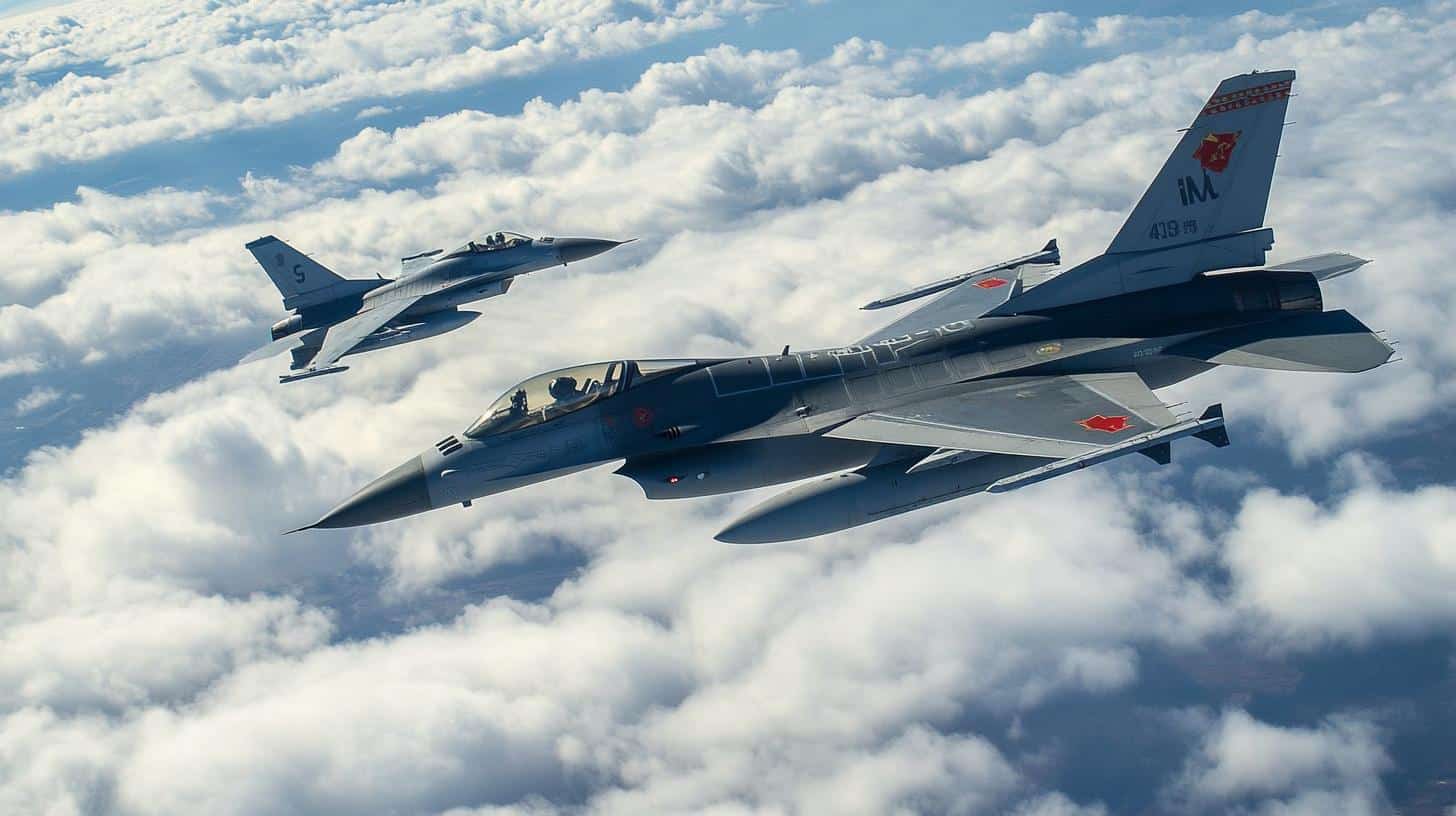Observers in the military domain have reported a notable incident during recent war games involving Taiwan and China.
During these exercises, Taiwan’s defense forces utilized an F-16 fighter jet to closely monitor a Chinese J-15 aircraft. The F-16 was equipped with an advanced sniper pod, allowing it to track the movements of the J-15 with precision. This occurrence underscores the persistent tensions in the region, as both nations continue to assert their military capabilities.
The tracking of the Chinese fighter jet by Taiwan’s F-16 showcases the island’s readiness and commitment to safeguarding its airspace. Military analysts observed the operation as a demonstration of Taiwan’s strategic defense capabilities. The utilization of technology such as the sniper pod highlights Taiwan’s efforts to maintain a vigilant stance in response to regional threats.
Military experts have noted that these encounters between Taiwanese and Chinese forces are becoming more frequent. The exercises are seen as a reminder of the ongoing geopolitical challenges in the South China Sea. As both sides bolster their military operations, the international community watches closely, aware of the potential implications for broader regional stability.
This event is a clear example of the continued military posturing in the Pacific. Observers remain attentive to how these dynamics might evolve, impacting the delicate balance of power in the area. The incident reinforces the importance of diplomatic channels and communication to prevent misunderstandings and ensure peace is maintained.
The Impact of Military Posturing in the Pacific: A Tense Dance of Power
The ongoing geopolitical tension between Taiwan and China has been at the forefront of global attention. Recent military exercises have highlighted this delicate situation, with Taiwan utilizing an F-16 fighter jet, equipped with a high-tech sniper pod, to closely monitor a Chinese J-15 aircraft. This technological demonstration is a clear message of Taiwan’s readiness to defend its airspace and assert its sovereignty.
Military Readiness: A Technological Edge
The decision to use an advanced sniper pod on the F-16 not only allowed Taiwan to monitor the J-15’s maneuvers with precision but also showcased its commitment to staying technologically competitive. This action reflects Taiwan’s broader strategy of leveraging advanced military technology to maintain a deterrent posture. For Taiwan, which is constantly under the threat of military exercises from a much larger adversary, this level of readiness is critical in ensuring national security and maintaining international alliances.
Frequent Encounters: The New Normal?
Military experts have noted an uptick in these interactions, pointing to their increasingly frequent nature as a sign of heightened tensions. Each encounter could breed potential misunderstandings, urging the global community to watch closely. These developments could shift the dynamics of the South China Sea, a region already fraught with territorial disputes, thus impacting broader regional stability. Such encounters could transform from mere posturing to more serious conflicts if not carefully managed.
Regional and Global Implications
As both Taiwan and China continue to flex their military muscles, these actions send ripples through the international community. Allies and neighboring countries, particularly those with vested interests in the South China Sea, must consider these developments when formulating foreign policy and defense strategies. The aggressive military posturing observed has ramifications beyond immediate military objectives; it could disrupt trade, affect economic policies, and re-align strategic partnerships within the region.
The Importance of Diplomatic Channels
Amid this tense backdrop, there is a reinforced need for effective communication through diplomatic channels. Dialogue and negotiation are essential to avoiding potential escalations that these military displays could precipitate. Diplomatic engagement remains the cornerstone of maintaining peace and stability, urging nations involved to prioritize conversations over confrontations.
The dynamic between Taiwan and China serves as a microcosm for global military and political strategies where technological advancement, readiness, and diplomacy intertwine. Observers and leaders alike hope that these exercises and encounters can be leveraged towards peaceful resolutions rather than conflict.
For more detailed analysis on the evolving military strategies in the Pacific, visit The Diplomat.







